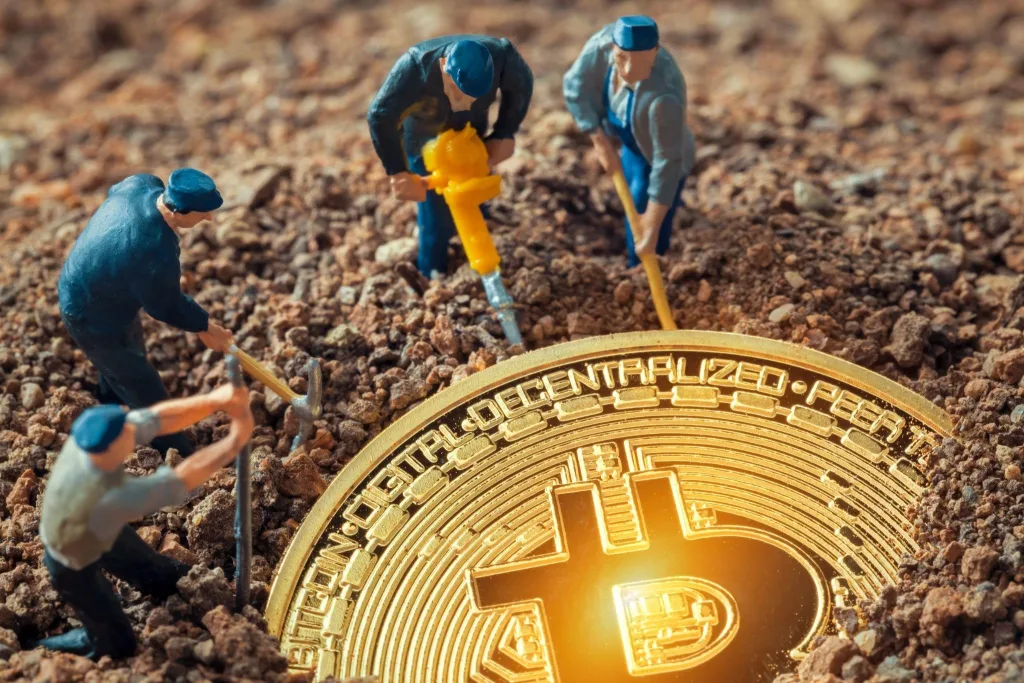Bitcoin Mining in 2025!
In the ever-evolving world of cryptocurrency, Bitcoin mining remains a topic of intense interest and debate. As we navigate through 2025, the landscape of Bitcoin mining has transformed significantly, presenting both new challenges and opportunities for those looking to enter this digital gold rush. This comprehensive guide will walk you through the ins and outs of Bitcoin mining, helping you understand its profitability, process, and potential in today’s market.
Table of Contents
What is Bitcoin Mining?
At its core, Bitcoin mining is the process of validating and recording transactions on the Bitcoin network. This critical activity serves two primary purposes:
- Verifying transactions to prevent fraud
- Adding new blocks to the blockchain, thereby creating new Bitcoins in a decentralized manner
Miners use powerful computers to solve complex mathematical puzzles, a process that requires significant computational power and sophisticated equipment. In return for their efforts, miners are rewarded with newly minted Bitcoins, hence the term “mining.”

The Bitcoin Mining Process: A Step-by-Step Breakdown
- Transaction Verification: Miners collect and verify recent transactions, ensuring they are valid and not fraudulent.
- Block Creation: Verified transactions are bundled into a block.
- Proof of Work: Miners compete to solve a complex mathematical puzzle, known as Proof of Work (PoW).
- Block Addition: The first miner to solve the puzzle adds the new block to the blockchain.
- Reward Distribution: The successful miner receives a reward in Bitcoin, currently set at 3.125 BTC per block as of 2025.
The Economics of Bitcoin Mining in 2025
The profitability of Bitcoin mining in 2025 depends on several key factors:
1. Hardware Costs
Modern Bitcoin mining requires specialized ASIC (Application-Specific Integrated Circuit) hardware. These devices are designed specifically for mining and offer superior performance compared to GPUs or CPUs.
2. Electricity Costs
Energy consumption remains a significant factor in mining profitability. Regions with low electricity costs, such as those with abundant renewable energy sources, offer a competitive advantage.
3. Bitcoin Price
The current market value of Bitcoin directly impacts mining profitability. Higher prices generally lead to increased mining activity.
4. Mining Difficulty
As more miners join the network, the difficulty of mining increases, requiring more computational power to earn rewards.
5. Block Reward Halving
Bitcoin undergoes a “halving” event approximately every four years, where the block reward is cut in half. The most recent halving occurred in 2024, reducing the reward to 3.125 BTC per block.

Is Bitcoin Mining Profitable in 2025?
The profitability of Bitcoin mining in 2025 is a complex equation. While the potential rewards are significant, the barriers to entry have increased. As of early 2025, the cost to produce one Bitcoin hovers around $106,000, slightly above the current market price of approximately $102,175.
However, profitability can still be achieved through:
- Operational efficiency
- Access to low-cost electricity
- Investment in cutting-edge hardware
- Participation in mining pools to increase chances of earning rewards
The Future of Bitcoin Mining
Looking ahead, several trends are shaping the future of Bitcoin mining:
- Sustainability Focus: Over 50% of mining operations now utilize renewable energy, a trend expected to grow.
- Technological Advancements: Ongoing improvements in ASIC technology continue to increase mining efficiency.
- Regulatory Landscape: Countries are adopting varied approaches to Bitcoin mining, from supportive policies to outright bans.
- Diversification: Some miners are exploring alternative revenue streams, such as leasing data center capacity to AI companies.
Getting Started with Bitcoin Mining
If you’re considering entering the world of Bitcoin mining in 2025, here are some steps to get started:
- Research and Education: Thoroughly understand the process, risks, and potential rewards.
- Choose Your Hardware: Invest in efficient ASIC miners suited for Bitcoin’s SHA-256 algorithm.
- Select a Mining Pool: Join a reputable mining pool to increase your chances of earning rewards.
- Set Up Your Operation: Ensure proper ventilation, cooling, and power supply for your mining setup.
- Stay Informed: Keep up with market trends, technological advancements, and regulatory changes.
Conclusion
Bitcoin mining in 2025 presents a landscape of both challenge and opportunity. While the days of mining Bitcoin on a personal computer are long gone, dedicated miners with the right resources and strategy can still find success in this digital frontier. As the cryptocurrency ecosystem continues to evolve, so too will the methods and technologies used in Bitcoin mining, ensuring its ongoing relevance in the world of decentralized finance.
Pi Network Marathon: Ripple (XRP) Price Predictions Are We Closer to the Finish Line?
FAQs
Q: How long does it take to mine 1 Bitcoin in 2025?
A: The time to mine 1 Bitcoin varies greatly depending on your mining setup and the overall network hash rate. For an average miner participating in a pool, it could take several months to mine 1 Bitcoin due to the high competition and difficulty levels.
Q: Is it legal to mine Bitcoin?
A: The legality of Bitcoin mining varies by country. While it’s legal in many nations, some countries have imposed restrictions or outright bans. Always check your local regulations before starting a mining operation.








